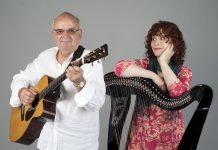Recently, representatives from several cities throughout Los Angeles County gathered in Long Beach for the first L.A. County Bike Summit. The theme was “Creating a Bike-Friendly L.A. County” and was well-attended by a wide range of stakeholders.
Hosted by the Los Angeles County Bicycle Coalition, The County of Los Angeles Public Health and Choose Health L.A., the goal of the summit was to bring together city representatives, cycling advocates and community members to learn from each other how to create more livable communities by making them more bike-friendly. Enthusiastic opening remarks from Long Beach Mayor Bob Foster started the day off with a bold admission – although he has been the mayor of what they are calling the Most Bike-Friendly city in America since 2006, he only started riding a bike with any regularity just two years ago (he currently logs 100 miles per week).
The event featured breakout sessions that covered topics ranging from engineering, grant competitiveness and collision data to bike parking, education and advocacy. Also included were several bike and walking tours of downtown Long Beach, showcasing the city’s most recent improvements. As informative as the sessions were, the most inspiring talks were delivered by Dr. James F. Sallis, Ph.D. and Long Beach Vice Mayor Suja Lowenthal, during the opening panel discussion.
Dr. Sallis, a professor of psychology at San Diego State University, presented several startling statistics regarding the dismal state of physical activity in this country and the benefits of cycling. Here are just a few:
· Physical inactivity is the fourth-leading cause of death in the U.S.
· One-third of children and two-thirds of adults are considered obese
· Half of the boys and a third of the girls under the age of 12 get the recommended one-hour of activity per day. From ages 12-19, this drops to between 5% and 10%
· There is now a direct correlation between increased walking/biking and reduction in obesity levels
· Cities that provide quality walking and biking infrastructure also see reductions in healthcare costs and increases in productivity. In other words, getting people walking and biking is not only cost effective, but directly affects a city’s bottom line.
The focus of Lowenthal’s talk was on the role civic leaders play in this equation. Long Beach has been blessed with a trifecta of leadership: political will, enthusiastic and supportive city staff and community leaders. This is a powerful combination that has accomplished a lot, but it was Lowenthal’s role in her community which was so revealing. She admits to not being a cyclist. At most, she says, she rides two to five miles a week. But she understands the value that cycling and pedestrian improvements bring to her community and recognizes she was elected to do the will of her constituents and this she does with dedication and passion.
This theme of political will came up throughout the day. Glendale Mayor Laura Friedman and speakers from Pomona and Temple City touched on it as they discussed their city’s plans and progress, as did some post-summit roundtable discussions. Although Culver City did have city staff in attendance, none of its council members were able to be there. This is unfortunate, as hearing these talks firsthand would likely have been more inspiring than reading a staff report after the fact.
The Summit shed light on some facts that are now quite evident: Bicycle and pedestrian improvements make communities safer, healthier and more livable. More people walking and biking saves cities money in the long-term in numerous ways and can increase the bottom line in others, such as increased property values and additional retail sales. Polls are increasingly showing the public prefers public money to be spent on walkways and bikeways rather than roads and highways.
One may wonder why any city should be spending resources securing funding to pay for these projects. For example, if someone doesn’t visit the Baldwin Hills Scenic Overlook, why would care if there is a sidewalk there or not? If someone doesn’t have school-age children, is it important there are safe routes for them to walk or bike to school? If someone isn’t planning to use the Expo Line, is it necessary to have bike facilities at the Expo station? If someone doesn’t own a bike, why should the Parcel B proposals include biking and walking facilities?
The answer is because these projects improve our community in ways that benefit us all. New sidewalks, bike facilities and safer streets for children, mean safer, more accessible streets for all of us. It means a more vibrant and sustainable community. It means we are looking to the future and not spinning our wheels in the present.
Culver City is one of only 11 cities in the county with a Bicycle Pedestrian Master Plan in place. Our plan was supported by residents and passed unanimously by city council. But the plan is useless unless we have the political will to embrace it and the public support to encourage it. As residents, we need to let our elected officials know we want a better Culver City and that these types of improvements are one way to achieve that. We have two of the three elements in place: enthusiastic city staff and community leadership. We now need the political will to ensure real change happens.
Vice Mayor Lowenthal has paved a path all elected officials should follow when she states that it doesn’t matter if she rides a bike or even likes bikes, but her community does and they elected her to address their concerns. Likewise, it is up to Culver City residents to make sure our elected officials uphold the job we elected them to do, in this case, implement the master plan. We need them to know that bicycle-pedestrian improvements benefit all 40,000 residents of Culver City and should be included in every redevelopment project whenever possible. They should be more than just options; they should be required.
Jim Shanman is a founding member of CCBC and president of Walk ‘n Rollers, a nonprofit organization committed to encouraging children through education and training to bike, walk, skate or scoot to school more frequently. For more information, go to walknrollers.org.
Bike Safe, Bike Smart! is a weekly column to promote responsible cycling by providing information, education and advice about riding. It’s written by members of the Culver City Bicycle Coalition (CCBC), a local chapter of the Los Angeles County Bicycle Coalition. Join them for their family bike ride the last Sunday of every month. For more information and to submit questions, write: ccbicyclecoalition@gmail.com and visit their blog:ccbike.org.













